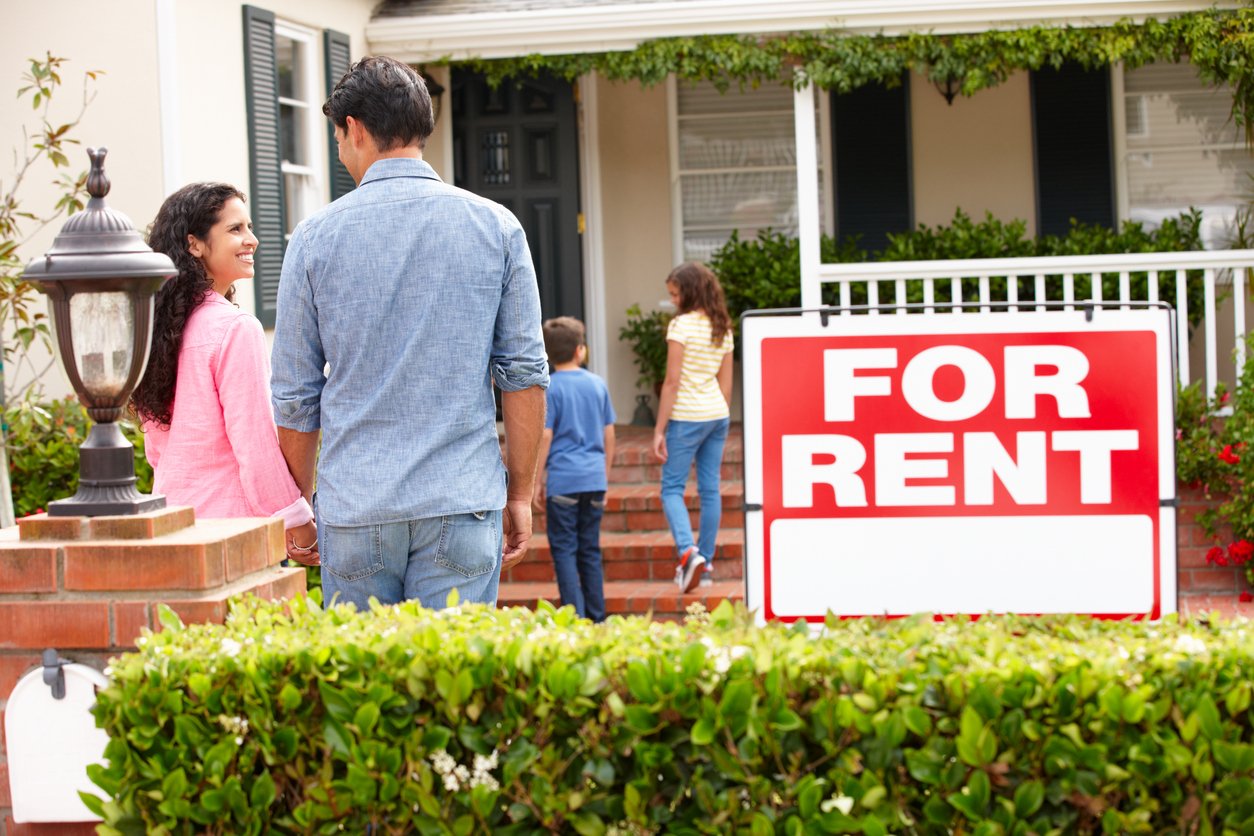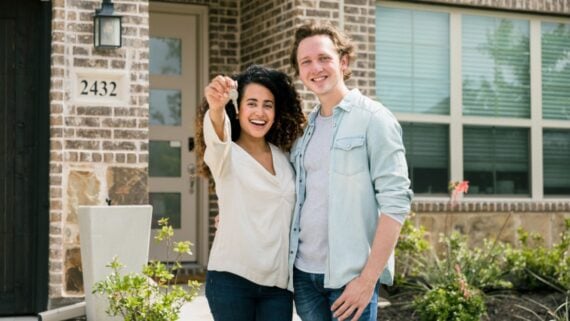For years, housing has felt like a two-track system: Buy a house (if you can afford the astronomical down payment and rising mortgage rates), or rent an apartment and tolerate the neighbor who plays Guitar Hero at 2 a.m. without fail. Now a third option is spreading fast across the country: Build-to-rent (BTR) communities, aka entire neighborhoods of single-family homes and townhomes built specifically for renters.
At first glance, they look just like neatly-lined suburban homes, complete with all the amenities you’d expect from a luxury apartment. And they’re attracting everyone from young families to downsizing retirees. But they also raise a bigger question: Who are these communities really serving at a time when homeownership keeps slipping out of reach? Here’s everything you need to know before you consider signing a lease, plus insights from actual BTR renters.
What Are Build-to-Rent Homes, Exactly?

BTR communities are neighborhoods of houses or townhomes owned and managed by a single company rather than sold off to individual buyers. Think:
- Detached homes, duplexes, or townhomes
- Private driveways or small yards
- On-site management
- Amenities like pools, dog parks, playgrounds, and BBQ grills
- Maintenance included
In short: The space and feel of a house, delivered with apartment-style convenience.
Why They’re Taking Off

The surge in build-to-rent communities isn’t random. As demand rises for affordable, quality housing, developers are racing to build entire neighborhoods designed exclusively for renters. Here’s what’s fueling the boom:
- Homeownership has gotten harder. With sky-high mortgage rates, low inventory, and rising construction prices, many renters are stuck in limbo — unable to pull the trigger on a house, but craving the space and independence that comes with owning one.
- Millennials and Gen Z want room to breathe. As people settle down, work remote jobs, or adopt pets, a quiet neighborhood with an office nook or backyard becomes a lot more appealing than the constant hustle and bustle of living in a tiny city apartment.
- Investors see a gold mine. Developers and investors have realized that renters in single-family homes tend to stay put longer, making these communities a steady, low-risk business. In other words, the demand was already there; developers are simply cashing in on it.
Where They’re Growing

BTR housing is popping up all across the country, but they’re especially concentrated in Sun Belt metros where land is easier to build on and populations are growing fast, including:
- Phoenix, AZ – Roughly 17,000 BTR units, the largest build-to-rent inventory in the country.
- Dallas, TX – About 14,700 units, with more in the pipeline.
- Houston, TX – Around 8,800 units, with thousands more under construction.
- Atlanta, GA – Roughly 8,100 units; completions jumped 75% from 2022 to 2023 alone.
- Charlotte, NC – More than 4,000 units and growing.
You’ll also see strong growth in places like Las Vegas, Austin, San Antonio, Columbus, and Detroit, where developers can still find land for cheap, and demand for rentals is holding steady, or growing.
Pros for Renters

- More privacy and space. No shared walls above or below you, plus a yard for kids or pets to play in.
- No homeowner headaches. Leaky faucet? Broken appliance? Landscaping mishap? Management handles it at no cost to you.
- Flexibility. A 12-month lease is far easier to walk away from than a 30 (or 50-year?!) mortgage.
- Move-in ready convenience. No down payment needed and no long-term commitment.
“When given a preference, most people don’t want to live in an apartment,” writes one Redditor. “They want a lawn. They also don’t want to share a wall with someone.”
Another adds, “The biggest advantage is that these houses could eventually be sold once interest rates and the housing market settle.”
The Cons

- Not always cheaper. Since you’re essentially paying for brand new construction and amenities, BTRs can come at a premium compared to more basic housing.
- No path to ownership. You get to experience the lifestyle of a homeowner without any of the equity-building that comes with actually owning the home.
- Corporate landlords. Instead of a mom-and-pop landlord, you’ll be dealing with a large management company. This can mean strict rules and less flexibility.
- Affordability concerns. Critics argue that investor-built subdivisions limit the supply of starter homes for everyday buyers, especially in hot markets.
“I have some bad news for you,” writes another Redditor. “Once population density reaches a certain point, housing will never be affordable in that area again, preferences or no preferences.”
Another notes, “It’s all fine and dandy, but being at the mercy of the landlord doesn’t really work for many people, [especially] not knowing how much he/she/they will hike rent next renewal.”
Who Build-to-Rent Is (and Isn’t) For

BTR isn’t one-size-fits-all. It tends to work best for:
- Renters who crave more space but can’t buy yet
- Families with kids or pets
- People relocating or “trying out” a new city
- Anyone who wants a house without the upkeep costs
It’s not ideal for:
- People laser-focused on building equity
- Anyone on a very tight budget
- Renters who want freedom to renovate, paint, or customize their homes
The Bottom Line

BTR communities offer a much-needed middle ground between apartment-living and homeownership. For many renters, they deliver on the space, privacy, and comfort of a house without the long-term financial commitment. For others, they’re a sign of how tough the path to buying has become — and how much of America’s housing market is increasingly controlled by investors and large corporations.
If you’re considering renting one, the key question isn’t whether BTRs are good or bad. It’s whether the price, perks, and flexibility align with your budget and long-term financial goals.
More real estate stories on Cheapism

- 12 Home Upgrades That Are a Total Waste of Money — While maintaining a home is crucial, not all upgrades offer the best return on investment — some can quickly turn from a benefit to a financial drain.
- 5 Projects That Boost Home Value — and 5 Cheap Alternatives — For homeowners considering putting their houses on the market in the next year or so, here are several jobs to tackle.
- Making Extra Mortgage Payments Could Be the Smartest Move You Make as a Homeowner — A few smart tweaks can speed up your payoff date and leave you with way more money in the long run.




